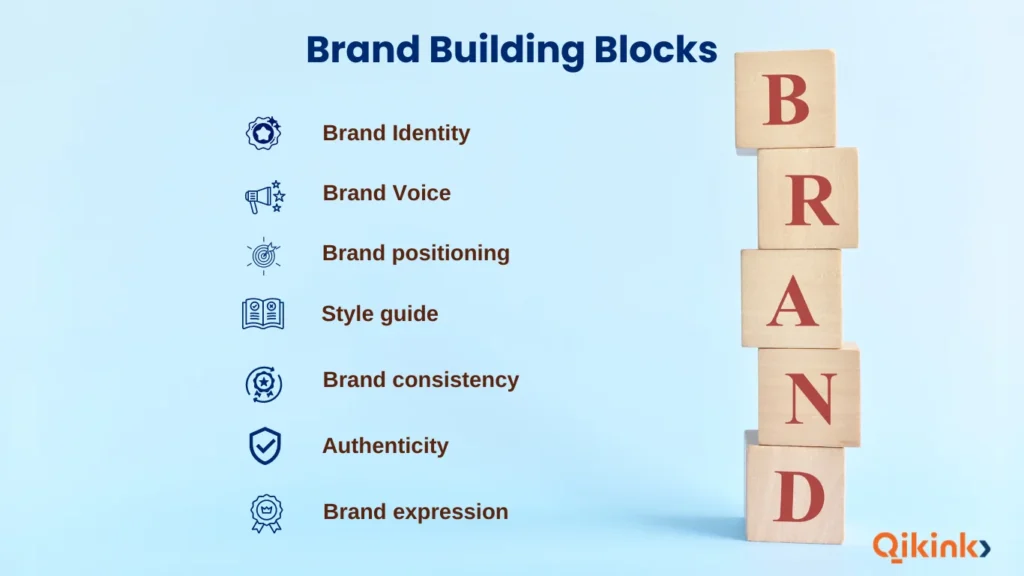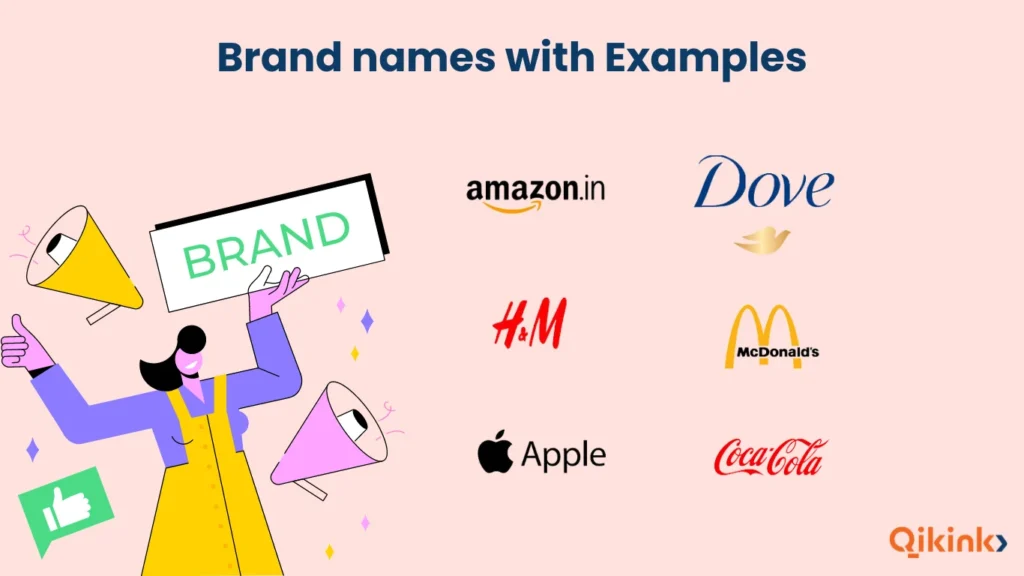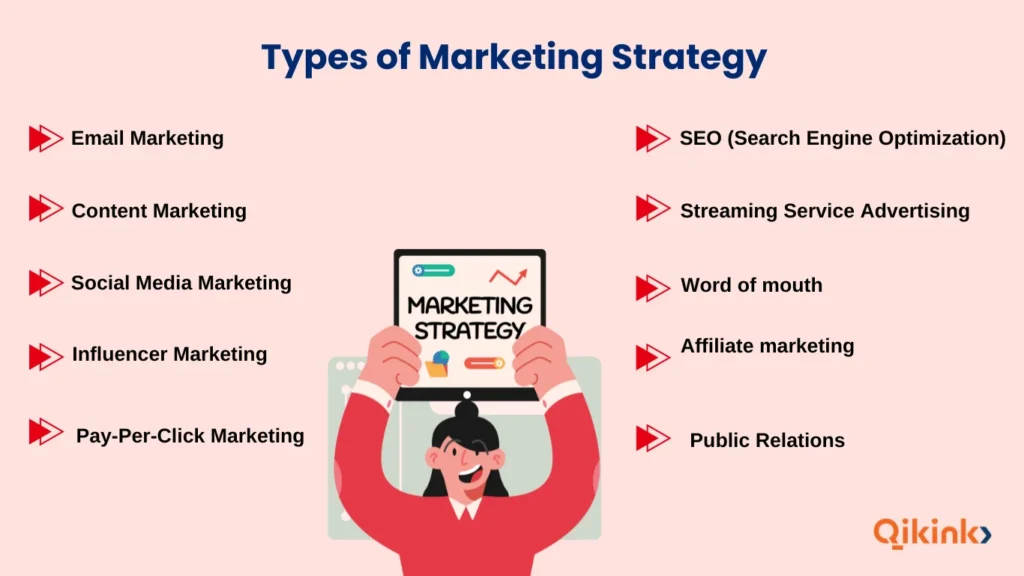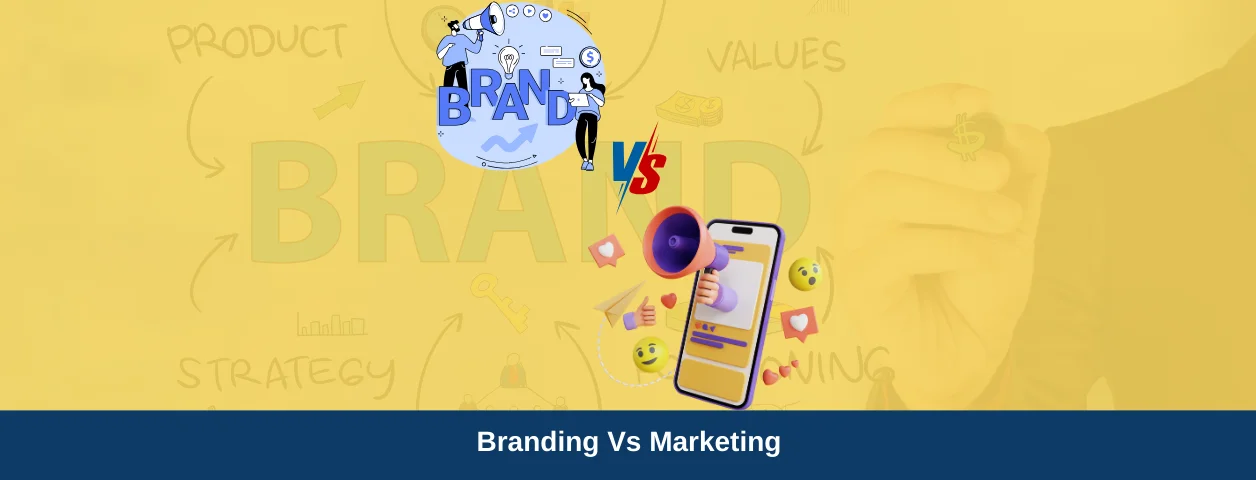Understanding the difference between branding and marketing is key to building a successful business. While branding focuses on shaping your identity and building trust with customers, marketing is all about communicating that identity and driving sales.
In this blog guide, we share the difference between branding and marketing and why getting both rights is essential for growth.
Whether you’re a business owner, a marketer, or just curious about the topic, this exploration will provide valuable insights to help you navigate the world of branding and marketing effectively.
What is the difference between branding and marketing
Aspect | Branding | Marketing |
Definition | The process of creating a unique identity for a product or company. | The activities and strategies used to promote and sell products or services. |
Focus | Long-term perception and emotional connection with customers. | Short-term sales and customer engagement. |
Goal | To build brand equity and loyalty over time. | To drive sales and attract new customers. |
Elements | Includes brand name, logo, design, messaging, and values. | Provides advertising, promotions, market research, and sales tactics. |
Audience | Targets overall perception and identity in the market. | Targets specific consumer behaviors and demographics. |
Measurement | Measured through brand awareness, loyalty, and equity. | Measured through sales figures, conversion rates, and campaign performance. |
Example | Apple’s emphasis on innovation and quality. | A campaign promoting a new iPhone model with specific features and pricing. |
What Is Branding?

Branding is the process of creating a unique and recognizable identity for a product, service, or business. It involves creating a name, logo, design, and overall image that differentiates the entity from competitors and resonates with consumers.
Apple is a great example of effective branding. With its simple logo, sleek design, and minimalist packaging, Apple has created a strong and recognizable brand identity.
Key Elements of Branding
Creating a brand involves several building blocks that help to shape your brand identity and perception.
These elements create a memorable brand that resonates with your targeted audience.
1. Brand identity
A clear brand identity conveys your business value and mission. Clear visual elements such as logos, color palettes, and typography help create a recognizable brand identity.
A strong brand communicates your business perspectives clearly to your customers.
2. Brand voice
It is the unique personality expressed through communication through tone, style, and words.
For example, Nike’s voice is motivational and energizing, and their slogan, “Just do it,” conveys pushing boundaries and overcoming challenges.
Their brand voice consistently communicates through social media, websites, and advertisements, which help to connect with people.
3. Brand positioning
It is the process of clearly identifying the target demographics, including the preferences and behaviors of the audience.
It helps to highlight what makes your brand unique from other competitors and how your brand images are positioned in customers’ minds.
4. Style guide
It is a brand guideline with some specifications about representing your brand. It ensures consistency in how your brand elements, such as logo, typography, color, design, icon, symbol, and image, are presented across all platforms.
This style guide lets everyone learn precisely how to present their brand without changing guidelines on other platforms.
Why is branding important?

Branding creates a unique identity that helps customers easily identify your products or services. Here, we share why branding is important for every business.
1. Branding improves recognition
A strong brand helps you stand out in a crowded market. It creates a unique identity that makes it easier for customers to recognize and remember your business.
A memorable logo, consistent color palette, and brand messaging make your brand stand out in a crowded marketplace.
2. Branding builds trust
A strong brand conveys professionalism and reliability. Consistent branding across all touchpoints—such as your website, social media, and packaging—reinforces your commitment to quality.
When customers see a unique brand, they are more likely to trust your business and feel confident in their purchasing decisions.
3. Acquire new customers
Effective branding attracts new customers by clearly communicating your value proposition. A well-defined brand identity helps you target the right audience and convey the benefits of your offerings.
As customers recognize and relate to your brand, they are more likely to explore what you have to offer.
4. Branding supports advertising
A solid brand foundation enhances the effectiveness of your advertising efforts. Consistent branding ensures that all marketing materials align with your brand identity, making campaigns more impactful.
When customers see consistent messaging and visuals, it reinforces brand recall and improves the overall effectiveness of your ads.
5. Brand loyalty
Strong branding promotes loyalty among customers, motivating them to come back repeatedly. When customers feel a connection to your brand, whether through shared values or positive experiences, they are more likely to choose your products over competitors.
This loyalty can lead to repeat purchases and valuable word-of-mouth referrals.
Functions Of Branding
Branding serves several functions that are essential for a business’s success and longevity. It’s not just about a logo or a catchy slogan; it’s about creating a comprehensive identity that resonates with customers and increases engagement.
We will share the key functions of branding to understand how they contribute to building a strong, lasting presence in the market.
1. Differentiation
Branding helps a business stand out in a competitive market by highlighting unique features and benefits. A strong brand identity distinguishes your offerings from those of competitors, making it easier for customers to choose you over others.
2. Pricing
Effective branding can influence pricing strategies. A well-established brand can command higher prices due to perceived value and quality. Customers are often willing to pay more for brands they recognize and trust.
3. Branding and customer retention
A strong brand builds loyalty, making customers want to come back. When people feel an emotional connection to a brand, they are more likely to keep choosing it over time. This loyalty helps boost long-term profits.
4. Consistency
Consistency in branding across all channels—online, in-store, and in advertising—builds familiarity and trust. When customers experience the same brand message and visuals everywhere, it reinforces their perception and strengthens brand loyalty.
5. Packaging
Branding extends to packaging, which serves as a critical touchpoint for customers. Eye-catching and thoughtfully designed packaging not only attracts attention but also communicates brand values and quality, enhancing the overall customer experience.
6. Trust and credibility
Strong branding establishes trust and credibility with customers. When a brand is consistent and delivers on its promises, it builds a reputation that encourages consumers to engage and make purchases confidently.
7. Increases business value
A well-defined brand adds concrete value to a business. Strong branding can enhance market positioning, attract investors, and create opportunities for growth and expansion, ultimately increasing the overall value of the company.
Qikink offers excellent custom branding services for your online store.

What Is Marketing?

Marketing is the process of promoting, selling, and distributing a product or service to consumers. It involves a range of activities designed to understand customer needs, create awareness, and drive sales.
A great example of effective marketing is Nike. Nike uses targeted advertising campaigns that resonate with specific audiences, such as athletes, fitness enthusiasts, and lifestyle consumers. Their ads often feature inspirational stories that connect emotionally with viewers.
Why is marketing important?

Marketing is important because it helps businesses connect with their target audience by solving their problems, building brand awareness, and ultimately driving sales.
1. Customer Awareness
Effective marketing helps raise awareness of your products or services, ensuring that potential customers know what you offer and how it can benefit them.
2. Understanding Customer Needs
Marketing enables businesses to understand customer preferences and behaviors through market research, allowing them to tailor products and services to meet those needs.
3. Driving sales
Effective marketing plays a crucial role in driving sales by promoting products and services to potential customers. Through targeted advertising, engaging content, and strategic campaigns, businesses can capture consumer interest and encourage purchases.
4. Engaging Customers
Marketing strategies utilize various channels, such as social media, email, and events, to connect with customers in a personal and relevant way. By promoting two-way communication, brands can gather feedback, address concerns, and build a community around their products or services.
5. Supporting Business Growth
Marketing strategies can open up new markets, attract new customers, and expand existing customer bases, driving overall business growth.
Types of marketing

Understanding the various types of marketing is essential for effectively reaching and engaging your target audience. From traditional methods to innovative digital strategies, each type of marketing serves a unique purpose and is designed to connect with consumers in different ways.
- Business to Business (B2B) Marketing
- Business to Consumer (B2C) Marketing
- Cause Marketing
- Content Marketing
- Digital Marketing
- Email Marketing
- Direct Marketing
- Guerilla Marketing
- Inbound/Outbound Marketing,
- Influencer Marketing
- and Personalized Marketing
Conclusion
Understanding the difference between branding and marketing is crucial for any business aiming for lasting success.
Branding is all about creating a unique identity and building emotional connections with customers, while marketing focuses on promoting products and driving sales. Both are closely linked; strong branding makes marketing efforts more effective, and good marketing helps strengthen brand recognition and loyalty.
As you develop your branding and marketing strategies, remember that a combined approach will give you the best results.
Read More
Frequently Asked Questions
What is the role of branding?
The role of branding is essential for the success of a business. Here are some key roles:
- Establishing Identity,
- Building Trust,
- Creating Emotional Connections,
- Supporting Customer Loyalty.
What are the types of branding?
- Personal Branding: Promoting individuals as brands, which is common among entrepreneurs and influencers.
- Product Branding: Creating a distinct identity for specific products through logos and packaging.
- Corporate Branding: Building the overall image and reputation of a company across all its products and services.
- Service Branding: Emphasizing the quality and experience of services offered.
- Geographical Branding: Highlighting the unique aspects of a location, often used in tourism and local products.
What is brand benefit?
Brand benefits refer to the advantages that a brand provides to its customers, influencing their perceptions and purchasing decisions.
What comes first, branding or marketing?
Branding typically comes first, as it establishes the foundation for all marketing efforts. Branding defines a business’s core identity, values, and mission and guides how products and services are presented to customers.
How to market a product?
Here’s a guide on how to market a product:
- Identify Your Target Audience: Know who your ideal customers are and what they need.
- Conduct Market Research: Analyze competitors and market trends to find opportunities.
- Develop a Unique Selling Proposition (USP): Define what makes your product stand out.
- Choose Marketing Channels: Select the best platforms to reach your audience, such as social media and and email.
- Create Compelling Content: Produce engaging materials that highlight your product’s benefits.
- Build a Strong Brand: Ensure consistent branding across all channels for recognition and trust.
- Implement Promotions: Use discounts and special offers to encourage purchases.
- Leverage Influencer Marketing: Collaborate with influencers to expand your reach.
- Monitor Performance: Track results using analytics and adjust strategies as needed.
- Engage with Customers: create relationships through excellent service and community interaction.











